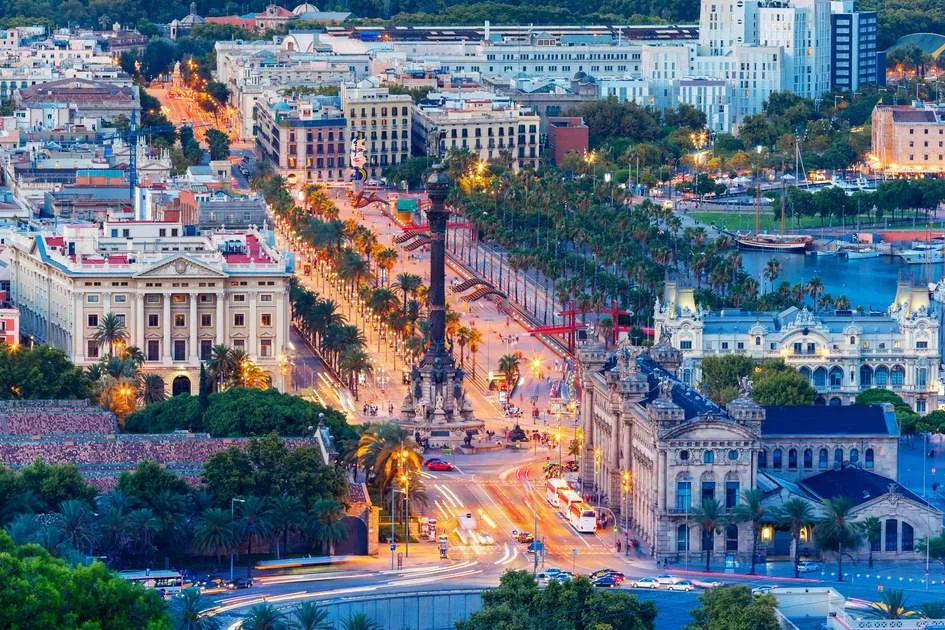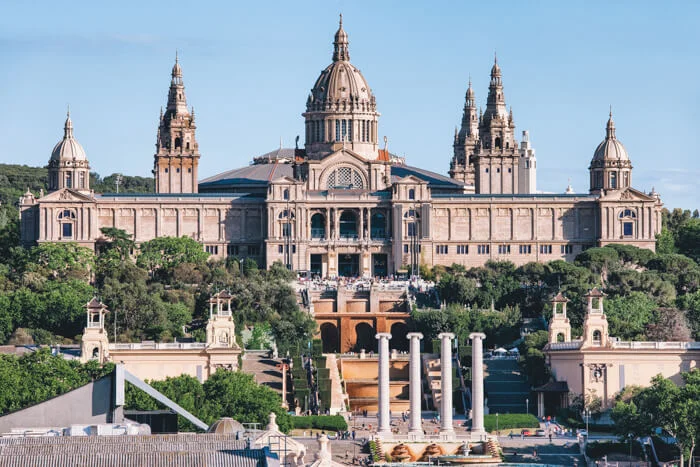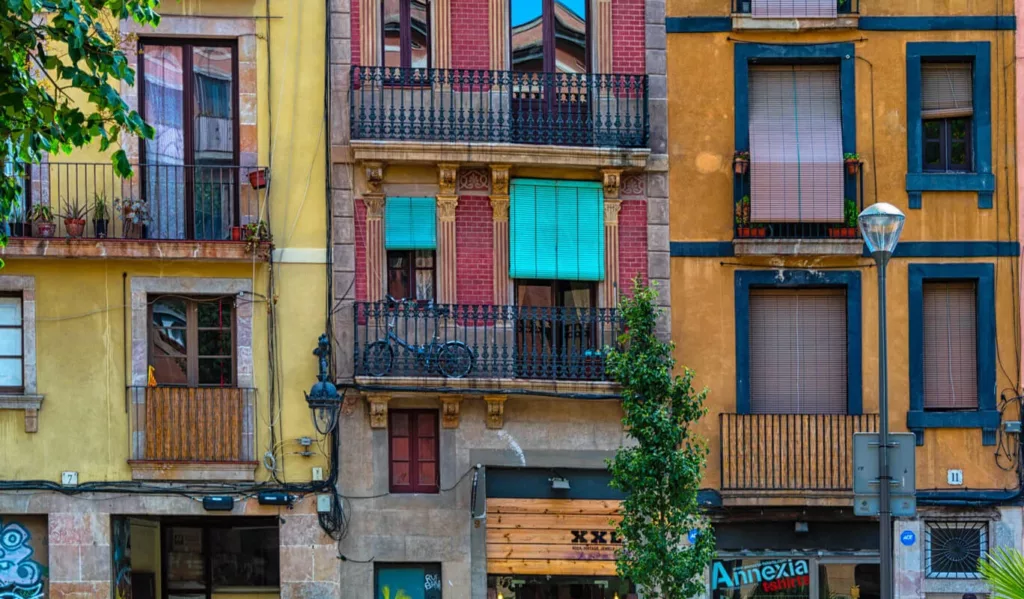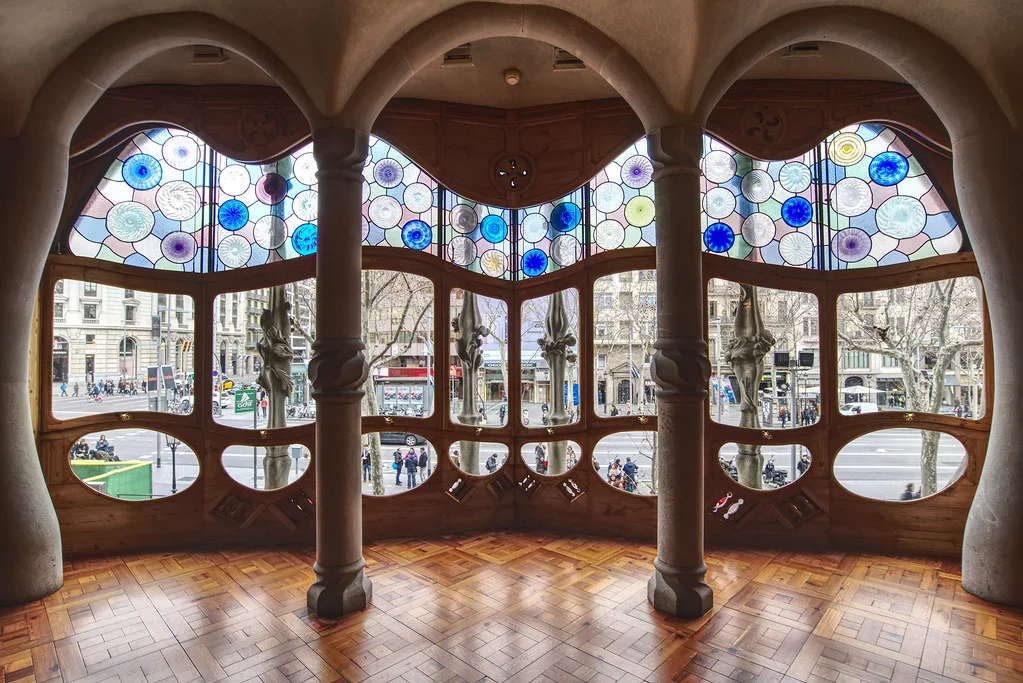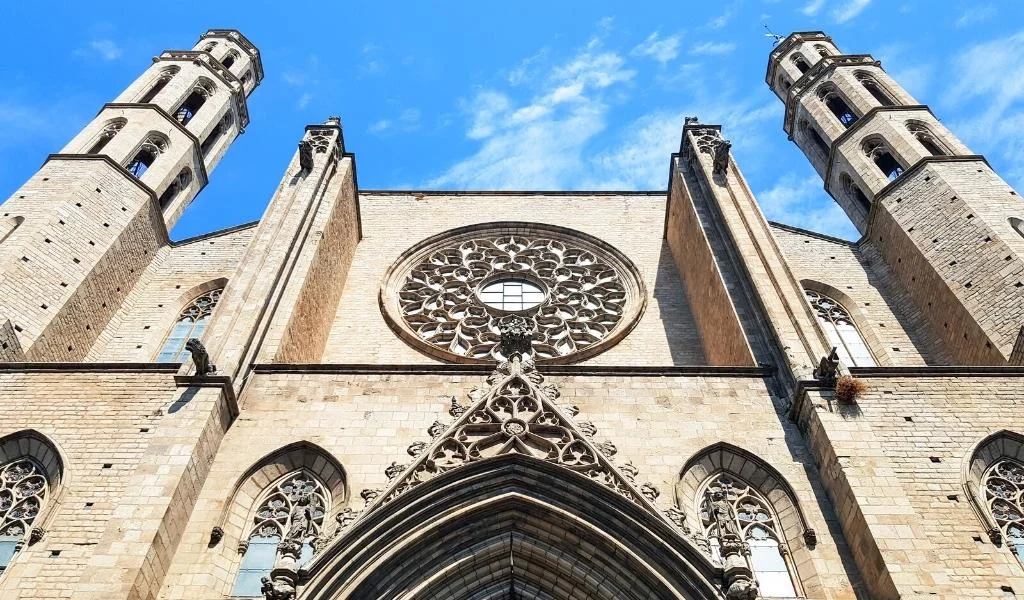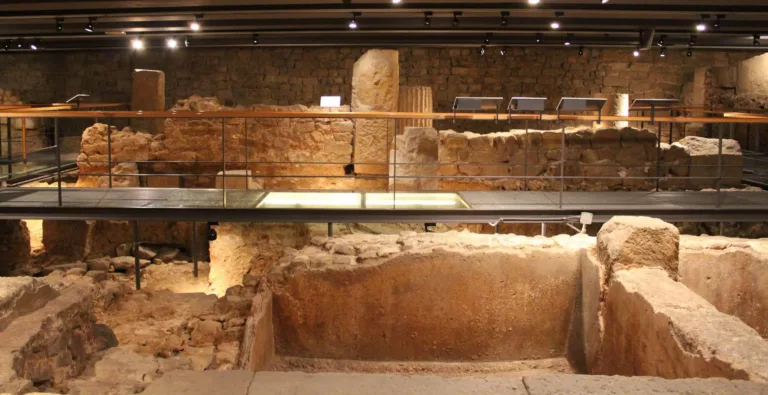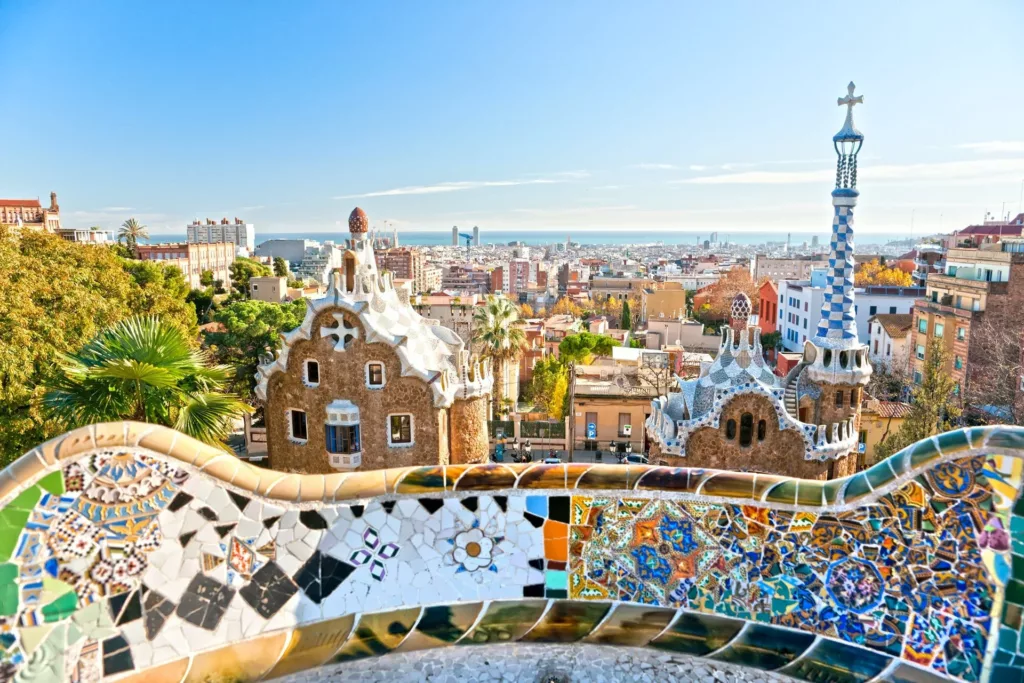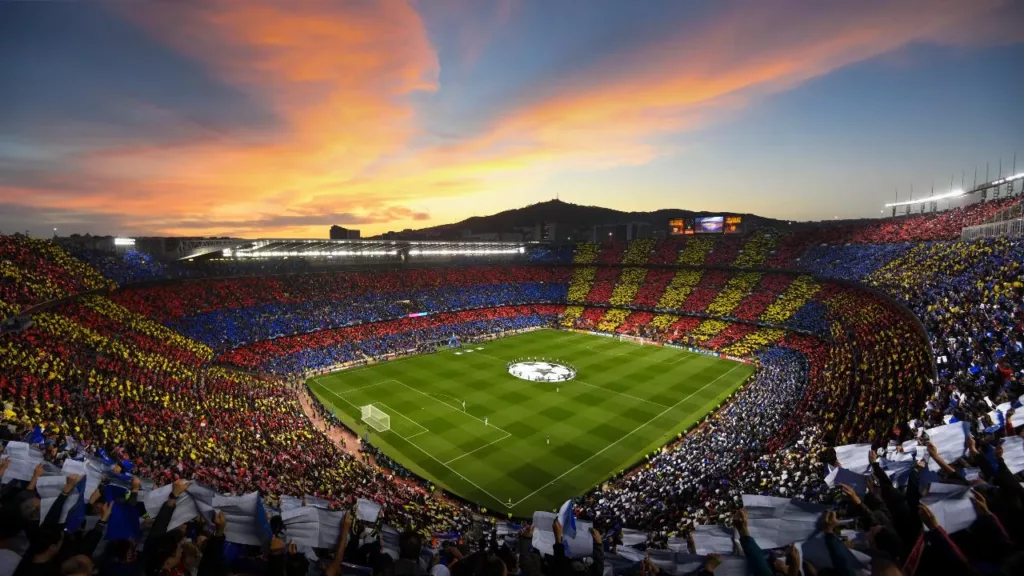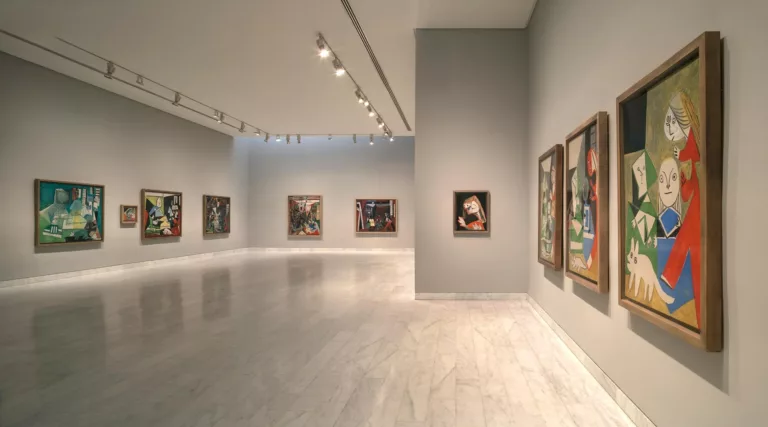As you step into Barcelona, the city greets you with its rich history and artistry, leaving you awestruck with its charming architecture and lively ambiance. It’s no wonder why Barcelona is a top destination for travelers from around the world. From the whimsical creations of Antoni Gaudi to the mesmerizing Gothic Quarter, Barcelona offers a range of experiences that cater to every taste. Whether you’re a foodie, a culture enthusiast, or simply in search of a vibrant nightlife scene, Barcelona has it all. In this guide, we’ll take you on a personalized tour of the city’s top attractions and hidden gems, ensuring that your visit to Barcelona is nothing short of magical.
Table of Contents
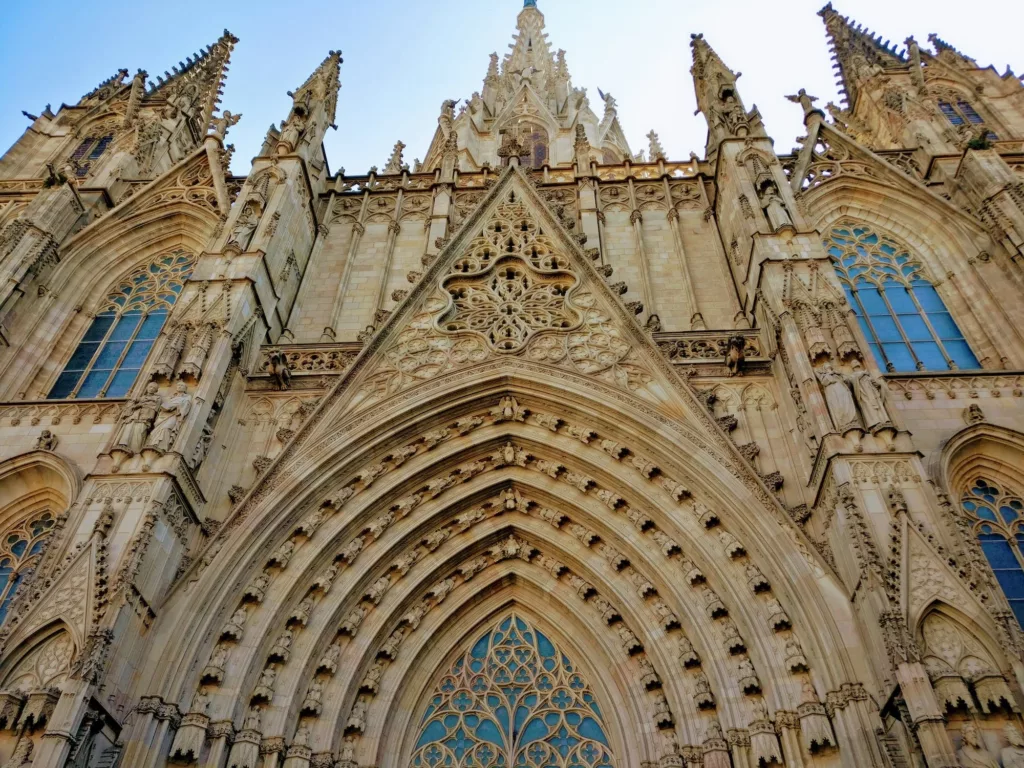
Explore the Gothic Quarter
The Gothic Quarter of Barcelona is a beautiful and historic neighborhood that encapsulates the city’s essence. This area is full of culture, charm, and character, from cobblestone streets to century-old shops and cafes. It’s home to landmark sites such as the Barcelona Cathedral, Els Quatre Gats, and Plaça de la Generalita. Not only can visitors explore its narrow alleyways, but they can also witness some stunning architectural sights.
The Gothic Quarter has been around for centuries, so it is no surprise that it contains remains from Barcelona’s Roman wall. Locals also enjoy spending time in this area due to its lively atmosphere; street food vendors line up La Rambla Avenue while artifact sellers sell leather jewelry close by La Sagrada Familia. Don’t miss Plaça Reial, fringed by cafes and palm trees, or Plaça Sant Jaume, which houses Palau de la Generalitat – an impressive palace dating back hundreds of years!
Las Ramblas
Walking down the famous Las Ramblas in the city center, one cannot help but feel awed by the hustle and bustle of this vibrant street. It runs from Plaça de Catalunya to the waterfront at Columbus Monument – a must-visit for tourists visiting this beautiful Spanish city. The trees lining either side of the road form a canopy overhead, providing shade on hot summer days. On your stroll, you’ll be treated to an array of entertainment – from living statues to street performers, musicians, and bird sellers. Even the scent of freshly baked waffles (gofres) wafting through the air will tantalize your senses!
At the end of Las Ramblas lies Barcelona’s Aquarium and Maremagnum mall, both well worth exploring during your visit. Along your journey, there are plenty of opportunities to observe local life and take in some quality people-watching. From young couples out on a date to families gathering for an evening stroll, there is abundant energy and diversity in this iconic location. From artists selling their paintings to vendors with their carts, it’s easy to spend an afternoon in this bustling area.
Montjuic
Montjuïc is a historic hill that offers much more than meets the eye. It’s situated just south of Barcelona and is a beautiful sight from the ground level. From the roundabout at Plaça España, visitors can follow an impressive architectural staircase up to the Museu Nacional d’Art de Catalunya (National Museum of Catalan Art), with its stunning water feature aptly named the Magic Fountain. This fountain puts on spectacular light and music shows every day from Wednesday to Sunday during the summer months of June to September and Thursday to Saturday during other times of the year.
This city district was developed for the 1929 International Exhibition, featuring several high-profile museums, including the National Museum of Catalan Art and Archaeology and Ethnology Museum. Of these three, the art museum is particularly recommended for its incredible views of Barcelona from its steps alone. The Magic Fountain is also amazing to behold at night – it’s located below this museum and was built for the exhibition.
Atop this hill stands a 17th-century fortress that has seen a great deal of history pass through it – including action in both the 1600s Catalan Revolt and the late 1930s Civil War, after which it served as a prison. Today, however, Montjuïc is home to Olympic Park and numerous museums and gardens – making it an incredibly picturesque place with lots to explore!
The view from Montjuic hill is breathtaking – especially when admired from one of its many gardens or museum rooftops. You’ll also find plenty of spots along its winding paths where you can enjoy a picnic amongst some stunning landscapes. For those wanting more activities than relaxing in nature, why not check out one of Montjuïc’s sporting activities, including sailing boats or rowing a kayak? There are many options available here for those who want to be active!
Explore El Raval Barrio
El Raval is the place to be if you’re looking for vibrant nightlife. The neighborhood has some of Barcelona’s most famous clubs and bars, from underground warehouse spaces to rooftop terraces with stunning city views.
There are also plenty of cultural activities on offer – take in some live music at one of many small music venues or check out an art gallery (there’s an abundance of independent galleries in this part of town). During the day, you can explore the hidden corners and discover street art, vintage shops, and local gems like the La Boqueria market. There’s something for everyone in El Raval!
El Raval is also known for its immense culinary offerings. You can find restaurants serving dishes from around the world, but be sure to sample local specialties like paella, calçots (spring onions), and crema Catalana. If you’re looking for a bite on the go, head to one of the many tapas bars – they’re not just found in El Raval, but this area has some of the best. For dessert, don’t miss out on churros with chocolate – a classic Spanish treat!
See also: Top Spanish Authentic Dishes
Casa Batlló
Few buildings in the world can rival the artistic brilliance of Antoni Gaudí’s Casa Batlló, which has been likened to Claude Monet’s Water Lilies because of its shimmering, glassy exterior. Commissioned by textile industrialist Josep Batlló after he was amazed by Gaudí’s work at Park Güell, this majestic home was constructed without any straight lines due to its inspiration from nature. This principle was deeply embedded into Gaudí’s eccentric designs.
Every detail of this house is simply remarkable, from the tall ocean-blue stairwell that brings to mind Jules Verne’s works to its intricate tiles and contorts stone pillars resembling animal bones. But it wasn’t built from scratch; instead, it was a remodel that took place at the turn of the 20th century – and you don’t need to visit Barcelona to recognize its roof that resembles the scales of a great dragon!
The interior of Casa Batlló is as captivating as its exterior, with every room conveying an atmosphere of grandeur and intimacy at once. Just take a look at the mushroom-shaped fireplace on the noble floor, designed for couples to bask in warmth during chilly winter nights. The attention to detail is simply staggering. It becomes even more evident when you explore all of Gaudí’s works that feature whimsical shapes and curved lines inspired by nature.
As majestic and ethereal as it may seem, Casa Batlló still manages to be cozy and intimate inside; no wonder it has become one of Barcelona’s most iconic landmarks! Its timeless beauty continues to captivate visitors worldwide, who can now admire its hidden treasures thanks to modern technology and 3D tours.
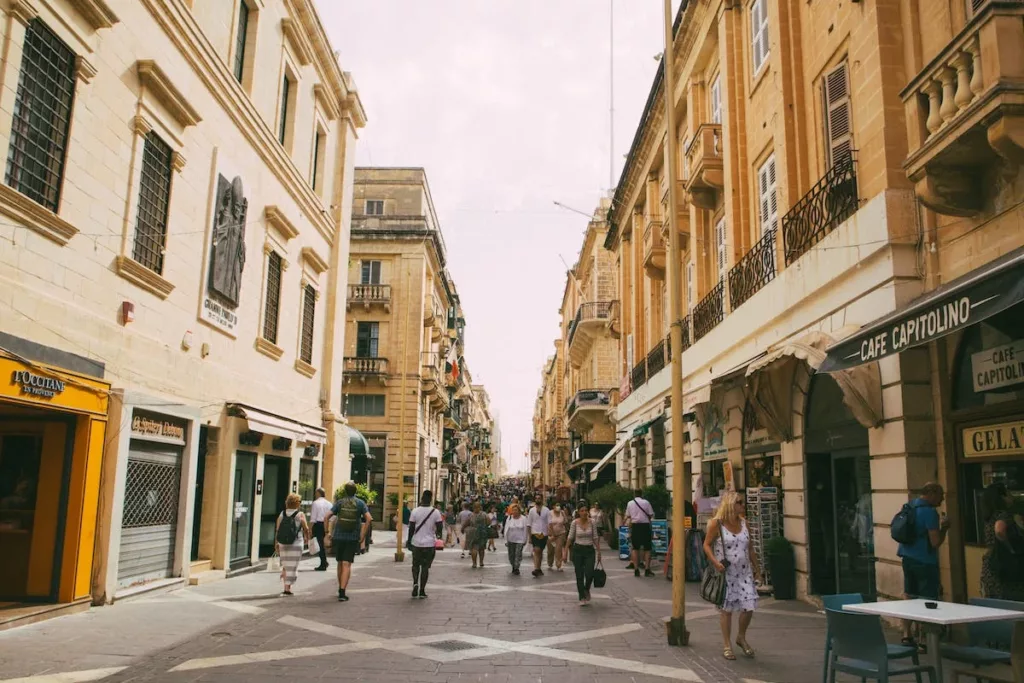
Join a walking tour
Joining a walking tour is a great way to explore the sights and sounds of any city. Not only do you get to see iconic landmarks and attractions, but you also get to discover hidden gems that locals know about. Experienced tour guides lead these tours, so they can provide interesting facts and stories about the area’s history. Plus, it’s convenient to see many different places in just one day!
Walking tours are usually affordable and give tourists an enjoyable way to spend their time. They only require a little physical effort since most routes are relatively short and easy to navigate. Usually, there’s no need for advanced planning either—look up when the next tour begins! Be sure to wear comfortable shoes and dress appropriately for the weather.
Read also: Interesting Facts About Spain
Marvel at Santa Maria del Mar
A visit to this church will be a spiritual experience and one that you won’t forget anytime soon. Check out the exquisite altars and attend an organ recital in its stunningly beautiful chapel. A must-see for any traveler to Barcelona who appreciates natural beauty and historical architecture!
The awe-inspiring Gothic church of Santa Maria del Pí is worth your time when visiting Barcelona, not just for its unique exterior but also for its rich history. Get the whole experience by attending a Mass (or other religious services) which takes place multiple times throughout the week—it’s a great way to get immersed into Catalonia’s culture and traditions.
Suppose you’re looking for something more interactive. In that case, guided tours are available, where you can learn about the church’s architecture and even admire some of its artworks. And if you still feel like exploring afterward, make sure to wander into the picturesque neighborhood that surrounds it—it’s filled with colorful streets, cozy restaurants, and plenty of hidden gems!
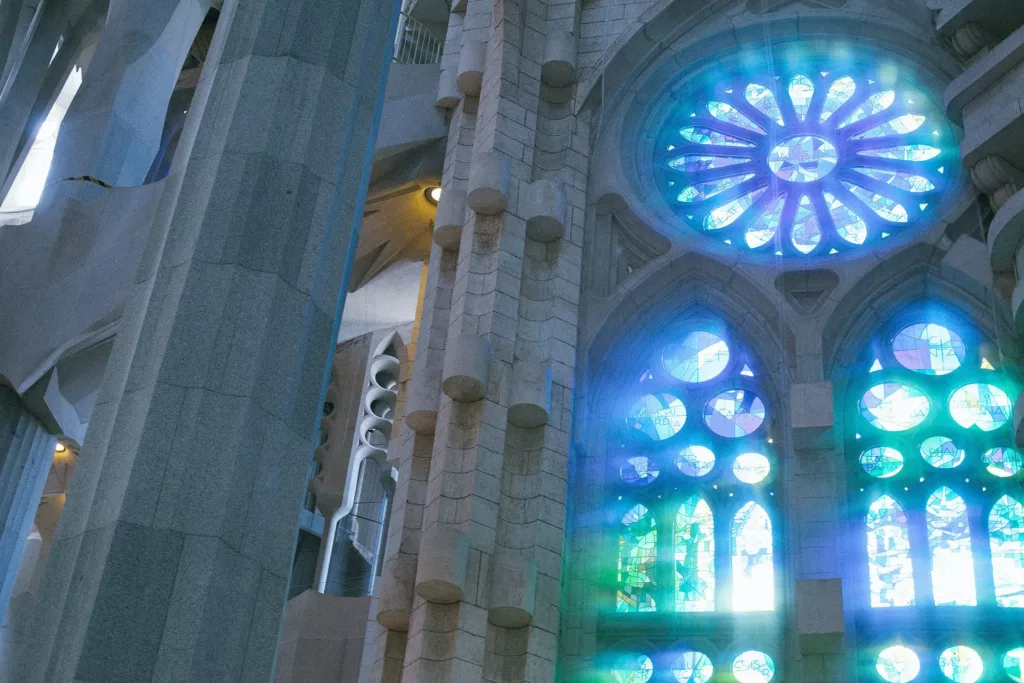
Sagrada Familia (Our #1 In The Top Things to do in Barcelona List)
Visiting La Sagrada Família, a UNESCO World Heritage Site in Barcelona, is a must when you’re in town. It’s the world’s largest unfinished church and has continued to be an ongoing project since its inception in 1882. The latest projected date for completion is 2026, although some speculate it will never be finished to preserve its charm. As such, the attraction is trendy, with millions of visitors each year, so booking tickets in advance online is essential.
When you visit the temple, there are a few different ticket options: a basic ticket (which grants you entrance), an audio guide (which takes around 45 minutes and costs €8 extra) as well as the option of hiring a tour guide or ascending one of the two towers (€15 more). The Passion Façade is higher, but if you want something extraordinary, head up to the Nativity Façade, as it has an outdoor footbridge connecting two structures. Be warned, though – this may not be your cup of tea if heights aren’t your thing! The steps leading down are pretty narrow and spiral-round, with open windows that can be quite intimidating! The elevator only goes up, though, so no worries there.
Walking into La Sagrada Família and looking up at the vaults and rainbow-stained glass windows will take your breath away; it is awe-inspiring! You’ll see many photographers aiming to capture that perfect shot, so if you have a superior camera compared to a smartphone, then make sure you bring it along. Despite being such a popular attraction, it’s still used as a functioning church – Pope Benedict XVI consecrated it in 2010 – with a free mass held on Saturdays at 8pm.
If tickets are sold out for La Sagrada Família when you’re visiting Barcelona, don’t worry! Make your way over to the Ayre Hotel Rosellón and head straight up onto their roof terrace, where you’ll get spectacular views of this incredible building from above – almost like taking some secret shortcut! Even from street level, there isn’t much that gives away just how amazing this hotel’s view will be, so make sure to do this, if nothing else, on your travels!
All in all, La Sagrada Família should definitely be top of anyone’s list when visiting Barcelona. With stunning architecture inside and out and religious meaning too, this shouldn’t be missed while traveling through Spain‘s second city.
Barcelona City History Museum (Museu d'Història de la Ciutat)
The Museu d’Història de la Ciutat is one of Barcelona’s most exciting and remarkable places. Located in the Gothic quarter, it provides visitors with a fascinating insight into the history of this beautiful city, from Roman times to the modern day.
Built-in 1931, the Palau Padellàs was moved stone by stone from its original location at Carrer de Mercaders to Plaça del Rei. This was done to make room for a road, but it also revealed significant archaeological remains. Excavations uncovered Barcino – Barcelona’s first name during Roman times – an extensive settlement with dwellings, craft shops, laundries, and other buildings.
Visitors can explore these ancient ruins through interactive displays and multimedia presentations that transport them back 2,000 years. When you arrive at the museum, you can see ancient ceramics and other objects in the modern entrance hall before taking an elevator ride down to explore Barcino. There’s plenty to learn about everyday life during Roman times, too: from how wine was made and processed in the 3rd century to visiting a Roman church from the 6th century and an episcopal complex from the 7th century.
Heading upstairs reveals further details about Barcelona’s past; visitors can admire spectacular artifacts that provide a vivid picture of what historic Barcelona looked like. The museum ticket also includes access to a palace chapel, Torre del Rei, and several excavations around Plaça del Rei, sure to captivate anyone interested in discovering more about this incredible city’s history.
Park Güell
If you’re looking for a true fairytale escape in Barcelona, Park Güell is the place to go. Originally conceived as an upmarket real-estate venture by entrepreneur Eusebi Güell, it’s now a UNESCO World Heritage Site and one of the city’s most beloved attractions. Created in collaboration with renowned Catalan architect Antoni Gaudí, Park Güell features surrealist structures, stunning mosaic designs, and sweeping city views.
A visit to Park Güell will be a feast for the senses: lush gardens, colorful architecture, and an air of mystery that makes you feel like you’ve been transported to another world. A must-see attraction is a stairway guarded by a giant mosaic lizard – an image seen on countless postcards! You can also explore Nature Square, with its wavy walls covered in mesmerizing mosaics. To access these areas, you’ll need to book a Monumental Cove ticket (€10) in advance online – this will give you entry into the park and its most important sites.
Park Güell is not only visually captivating; it is also rich in history and culture. For example, did you know that Gaudí lived on-site in Casa Museu Gaudí for 19 years? The building still stands today – although it comes at an extra cost of €5.50 per person – it makes for an exciting addition to your experience of Park Güell.
Getting around within Park Güell might seem intimidating initially; however, there’s no need to worry, as some helpful navigation tools are available online! Suppose you’re worried about mobility restrictions while exploring the park. In that case, there’s even a mapped route that minimizes steps and uneven pathways so everyone can participate in this unique experience.
Overall, Park Güell is ideal for people who want to explore Barcelona but don’t necessarily wish to participate in traditional tourist activities – here, visitors can enjoy nature right in the heart of the city! If you’re visiting during peak season, make sure you book tickets ahead of time, as tour buses flock here all year round. Do yourself (and your Instagram followers!) a favor and add this incredible park to your itinerary – we promise that it won’t disappoint!
Camp Nou
Camp Nou, the home of the Spanish football team FC Barcelona, is truly a sight to behold. This impressive 99,000-seater stadium has been the iconic ground of Barça since 1957 – and it’s easy to see why it has become one of Europe’s most renowned football cathedrals. Even if you aren’t a fan, visiting Camp Nou is a must for any sports lover wanting to be impressed by its sheer size and unparalleled grandeur. And if you’re a supporter, taking in the atmosphere is simply out of this world.
Each tour of Camp Nou includes an opportunity to explore behind the scenes of one of the world’s best teams – with access to the pitch side, presidential box, press room, and more. Visitors can also relive every victory through an extensive museum full of trophies, photos, and memorabilia from over 120 years of history. The museum even features interactive activities like virtual kickabouts that help bring the stories to life for all ages!
On match days or just before them, Camp Nou tours are typically unavailable due to safety restrictions – so make sure you keep an eye on the calendar when planning your visit. In addition to guided tours, Camp Nou also offers self-guided audio tours, which allow visitors to explore at their own pace without missing out on crucial details about its incredible history.
No matter how you experience Camp Nou, there’s no denying that it is one-of-a-kind – giving fans and non-fans alike a chance to immerse themselves in its electric atmosphere and bask in its unparalleled beauty.
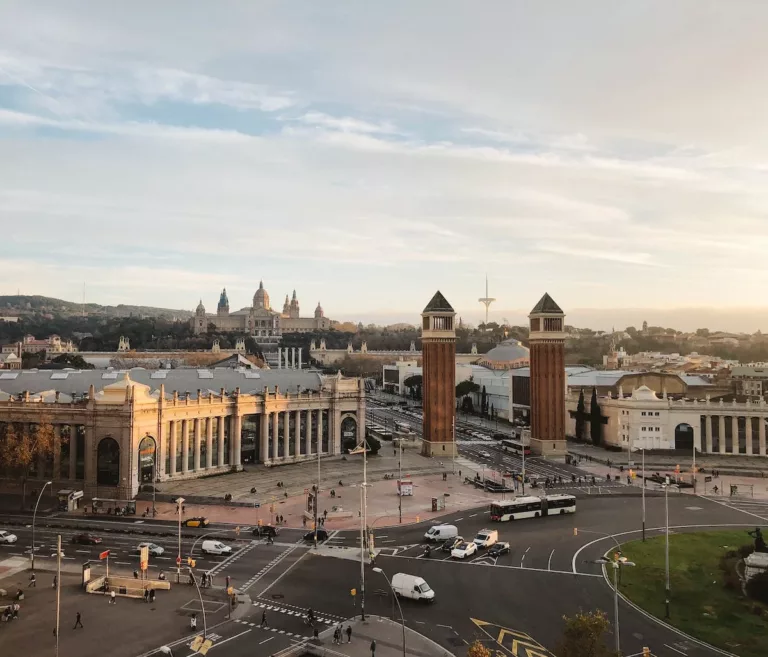
Plaça de Catalunya
Plaça de Catalunya is situated in the heart of Barcelona City. It is the city’s central hub, connecting all major shopping districts, tourist attractions, and transportation systems. It’s a place where locals come to relax and hang out, allowing visitors to get an authentic feel for the local culture and atmosphere. Plaça de Catalunya has been a central meeting point since medieval times, and today it hosts events such as outdoor concerts, exhibitions, festivals, and markets throughout the year.
The square also serves as a starting point for many walking tours that let you explore Barcelona’s hidden gems – from its colorful streets to traditional tapas bars. Whether you’re looking for somewhere to go sightseeing or have fun with friends, Plaça de Catalunya is the ideal city center spot for all kinds of activities. With its vibrant atmosphere and stunning architecture, it’s no wonder this iconic Barcelona plaza is a popular destination.
Picasso Museum
Spend time strolling around El Born, and you’ll find one of the most important museums in Barcelona – the Picasso Museum. This gallery houses an incredible 4,249 pieces made by one of Spain’s most influential and revolutionary painters, Pablo Picasso. A native of Málaga, in Andalusia, Picasso showed a strong talent for art from a very young age. When he moved to Barcelona with his family in 1895 at 14, he was accepted into the prestigious School of Fine Arts despite his young age.
Here, Picasso developed his unique artistic style, which strayed away from traditional painting techniques by focusing on everyday life, gypsies, prostitutes or beggars instead of grandeur like that of Velázquez or Michelangelo. The idea for a museum displaying his works came from Jaime Sabartés, a close friend of the artist who donated all his collection to the museum when it opened its doors to the public in 1963. Picasso himself also donated plenty more pieces, including Las Meninas, inspired by Velázquez, and 920 works from different styles and techniques created between 1890 and 1917.
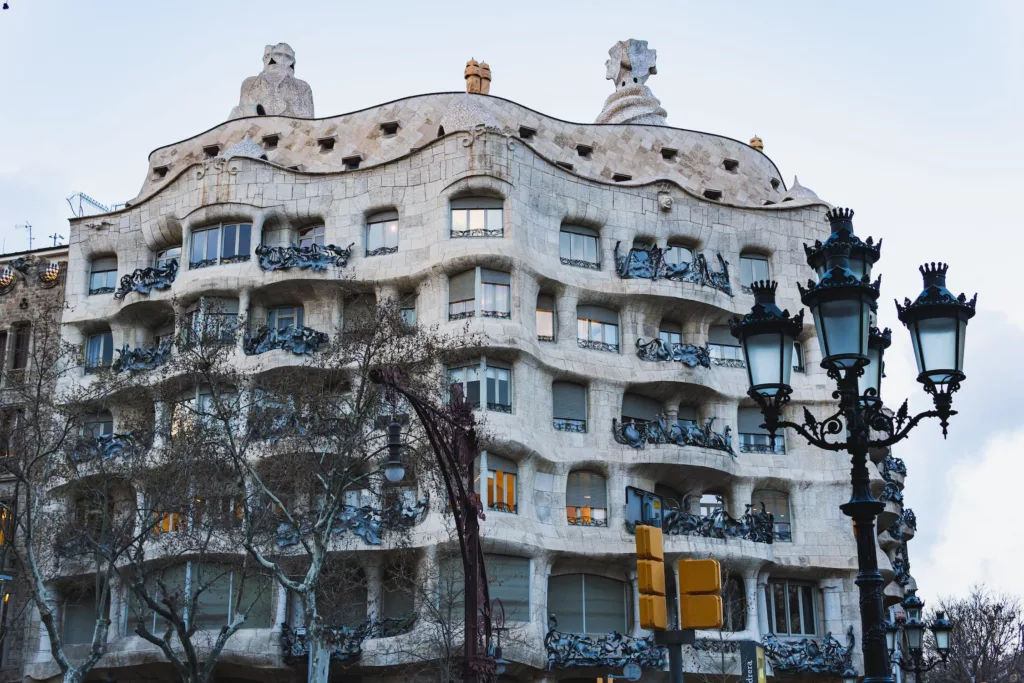
Casa Milà (Also known as La Pedrera)
La Pedrera, or Casa Mila, is a masterpiece of Antoni Gaudí located at No 92 Passeig de Gràcia. The building got its nickname of “Pedrera” due to its stone-like appearance; this name stuck, and it is still referred to by that name today. It was built in 1905 to house apartments and offices for the wealthy Milà family. Still, due to its irregularly shaped rooms, tenants had difficulty furnishing the units and were reluctant to rent them.
Today La Pedrera stands as a museum for all to admire. Visitors can explore the exquisite architecture and intricate details of Gaudi’s work which are still preserved in their original form. This includes the attention-grabbing balconies that line the exterior walls, each with its unique design. Inside, guests can visit two distinct sections – one that shows how the space was initially used by the Milà family. At the same time, the other provides an exciting insight into Gaudí’s artistic and architectural style. There is also a fantastic roof terrace with a garden where visitors can observe stunning views of Barcelona’s cityscape. For those who wish to learn more about La Pedrera, guided tours provide a comprehensive look into Gaudi’s most impressive creation.
Things to do in Barcelona FAQ:
Are 3 days enough for Barcelona?
The short answer is no, but it depends on what kind of activities you would like to do in Barcelona. If you are looking for a relaxed holiday with plenty of sightseeing, three days might be enough. However, you may want to explore the entire city and participate in more exciting activities. In that case, three days just won’t cut it. Plan for at least four or five days in Barcelona instead. This way, you’ll have time to enjoy all the city offers without feeling rushed or missing out on anything important!
What is the best month to go to Barcelona?
May is probably the best month for you since temperatures tend to be quite warm at this time. June and September can also be great months to visit if you don’t mind slightly higher temperatures but still want plenty of sunshine. On the other hand, if cooler weather is more your thing, then November or December is the ideal time as the average daily temperature in these months hovers around 10C (50F).
Is it better to go to Madrid or Barcelona?
It depends on what you’re looking for. Madrid has a lively nightlife scene, with plenty of bars, clubs, and restaurants to explore. The city also boasts some of Spain’s most iconic cultural sites, like the El Prado museum and Plaza Mayor square. Barcelona is perfect for those who love art and architecture – you can see unique works by Gaudí all over the city! Its picturesque coastline makes it ideal for sunbathers and beach lovers too.
What not to wear in Barcelona?
Firstly, leave your heavy coats at home – Barcelona rarely gets cold enough for them during winter. Sweaters and light jackets are perfect for when temperatures drop, but make sure they’re stylish-looking (no old sweatshirts!). Footwear-wise, flip-flops and trainers may be comfortable. Still, they don’t quite match the level of sophistication present in most places. Go for stylish leather loafers or sandals instead. Finally, avoid too many logos, branding, and gaudy colors – the people of Barcelona generally prefer subtlety and sophistication when it comes to fashion.
Is tipping rude in Barcelona?
Tipping in Barcelona is less widespread and expected than in other countries, such as the US. That said, offering a tip is still seen as polite and generous if you’ve had outstanding service. Typically, locals would leave 5-10% of the bill for small restaurants and cafes, but this isn’t an obligation.
